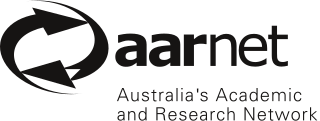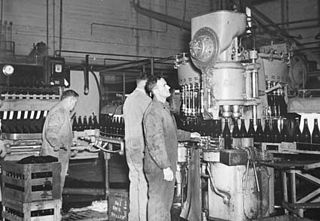Related Research Articles

The history of the Internet has its origin in information theory and the efforts to build and interconnect computer networks that arose from research and development in the United States and involved international collaboration, particularly with researchers in the United Kingdom and France.
Telstra Corporation Limited is an Australian telecommunications company which builds and operates telecommunications networks and markets voice, mobile, internet access, pay television and other products and services. It is a member of the S&P/ASX 20 and Australia's largest telecommunications company by market share. Telstra is the largest wireless carrier in Australia, with 18.8 million subscribers as of 2020.

Telecommunications in Australia refers to communication in Australia through electronic means, using devices such as telephone, television, radio or computer, and services such as the telephony and broadband networks. Telecommunications have always been important in Australia given the 'tyranny of distance' with a dispersed population. Governments have driven telecommunication development and have a key role in its regulation.

Television broadcasting in Australia began officially on 16 September 1956, with the opening of TCN-9, quickly followed by national and commercial stations in Sydney and Melbourne, all these being in 625-line black and white. The commencement date was designed so as to provide coverage of the Olympic Games in Melbourne. It has now grown to be a nationwide system that includes a broad range of public, commercial, community, subscription, narrowcast, and amateur stations.

iiNet Limited is an Australian internet service provider offering a wide range of NBN plans and services on its own ULTRA Broadband Cable, FTTB and VDSL2 networks. iiNet became part of the TPG Telecom group in July of 2020.

.au is the Internet country code top-level domain (ccTLD) for Australia. It was first created on 5 March 1986. Domain name policy is managed by .au Domain Administration (auDA). As of July 2018, the registry is operated by Afilias.

AARNet provides Internet services to the Australian education and research communities and their research partners.

MTV is a 24-hour general entertainment channel specialising in music and youth culture programming which serves Australia and New Zealand. It is operated by parent company ViacomCBS Networks UK & Australia headquartered in London with a local office in Sydney.
Internet censorship in Australia is enforced by both the country's criminal law as well as voluntarily enacted by internet service providers. The Australian Communications and Media Authority (ACMA) has the power to enforce content restrictions on Internet content hosted within Australia, and maintain a blocklist of overseas websites which is then provided for use in filtering software. The restrictions focus primarily on child pornography, sexual violence, and other illegal activities, compiled as a result of a consumer complaints process.

Austar was an Australian telecommunications company. Its main business activity was subscription television but it has also been involved with internet access and mobile phones. It was founded in 1995 under the name Community Entertainment Television (CETV).

Beer arrived in Australia at the beginning of British colonisation. In 2004 Australia was ranked fourth internationally in per capita beer consumption, at around 110 litres per year; although, the nation ranked considerably lower in a World Health Organization report of alcohol consumption per capita of 12.2 litres. Lager is by far the most popular type of beer consumed in Australia.
Connect.com.au was one of the first commercial Internet service providers (ISP) to operate in Australia. The company was founded in 1991 by Hugh Irvine, Benjamin Golding and Joanne Davis, in conjunction with a small group of highly technical staff including Chris Chaundy.

000 Emergency, also known as Triple Zero or Triple 0, and sometimes stylised Triple Zero (000), is the primary national emergency telephone number in Australia. The Emergency Call Service is operated by Telstra, and overseen by the Australian Communications and Media Authority (ACMA), and is intended only for use in life-threatening or time-critical emergencies.
Card sharing, also known as control word sharing, is a method of allowing multiple clients or digital television receivers to access a subscription television network with only one valid subscription card. This is achieved by electronically sharing a part of the legitimate conditional access smart card's output data, enabling all recipients to gain simultaneous access to scrambled DVB streams, held on the encrypted television network.
Internet in Australia first became available on a permanent basis to universities in Australia in May 1989, via AARNet. Pegasus Networks was Australia's first public Internet provider in June 1989. The first commercial dial-up Internet Service Provider (ISP) appeared in capital cities soon after, and by the mid-1990s almost the entire country had a range of choices of dial-up ISPs. Today, Internet access is available through a range of technologies, i.e. hybrid fibre coaxial cable, digital subscriber line (DSL), Integrated Services Digital Network (ISDN) and satellite Internet. In July 2009, the federal government, in partnership with the industrial sector, began rolling out a nationwide fibre-to-the-premises (FTTP) and improved fixed wireless and satellite access through the National Broadband Network. Subsequently, the roll out was downgraded to a Multi-Technology Mix on the promise of it being less expensive and with earlier completion. In October 2020, the federal government announced an upgrade by 2023 of NBN fibre-to-the-node (FTTN) services to FTTP for 2 million households, at a cost of A$3.5 billion.
Yahoo! Australia is the Australian subsidiary of global internet company Yahoo! Originally a 50/50 joint venture between Yahoo! and Seven West Media, it has been a 100% subsidiary of Verizon Media since March 2018. Yahoo! is a web portal, providing email, online news and lifestyle content, as well as weather, travel and retail comparison services.
Telecommunications in Antarctica take place between research stations and either other stations or external contacts. Communication infrastructure is provided by the country which administers each base.
Freeview is the brand name of the digital terrestrial television platform in Australia intended to bring all of free-to-air (FTA) broadcasters onto a consistent marketing platform, to compete against subscription television, in particular Foxtel. The strategy coincided with the expansion to 3 digital channels for each FTA network and the planned phasing out of analog television in Australia. Important services from Freeview include its free-to-air channels with an enhanced EPG across all channels. Freeview also certifies televisions, set-top boxes and personal video recorders (PVR) which meet its standards.

This is a timeline of Australian inventions consisting of products and technology invented in Australia from pre-European-settlement in 1788 to the present. The inventions are listed in chronological order based on the date of their introduction.

The National Broadband Network (NBN) is an Australian national wholesale open-access data network. It includes wired and radio communication components rolled out and operated by NBN Co, a publicly-owned corporation. Internet service providers, known under NBN as "retail service providers" or RSPs, contract with NBN to access the data network and sell fixed Internet access to end users.
References
- 1 2 Clarke, Roger (29 January 2004). "4.2: 1975-1984". Origins and Nature of the Internet in Australia. Xamax Consultancy. Retrieved 26 April 2015.
- ↑ "Archived copy". sydney.edu.au. Archived from the original on 4 March 2016. Retrieved 12 January 2022.CS1 maint: archived copy as title (link)
- ↑ http://www.aunic.net/policies.html#ozau